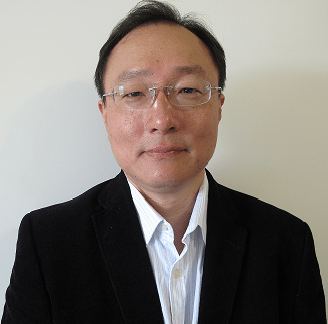Of course that is not something currently possible, but what b&b batteries does have are some secret recipes for their very specialised battery designs.
G Ajit Kumar, Director – India & SAARC, Maggy Lin, General Manager, and David Liu, Global Sales Director, B&B Batteries, speaks with Dilin Anand FROM EFY.

Q. What’s unique about the way your company does business?
A. In the battery industry, most of the other players are basically just supplying to the UPS industry – they are producing generic range to these kinds of organisations. However, we are focused on finding out innovative applications like Industrialisation 4.0 and mini hybrid electric vehicles, and then designing battery recipes for those applications that are then converted into high quality batteries. We design these in Taiwan, but we manufacture in China.

Q. What’s driving this intense focus on designing quality battery recipies?
A. If there’s one thing that we have inherited from our parent company, it is the fact that quality matters the most. Our parent company is a 55-year-old Taiwanese firm, are into manufacture & marketing of barbeque sauce. Yes, we know barbeque sauce is quite different from battery acid, but being in the food industry the company also knows that it cannot afford to make any mistakes.
So when the founder invested in B&B Batteries, he wanted to ensure that we make the highest quality products. Now 22 years later, we have established a very high reputation on quality. Today, we also manufacture batteries for big battery manufacturers in Japan and Europe. In fact an interesting thing here is that B&B is the only one in China who is capable of manufacturing for Japanese battery manufacturers.

Q. Could you explain the need for specialised batteries?
A. I’ll give you an example of another segment to help you understand the concept. 70 years ago if you wanted to buy a watch, you had limited choice to pick in the way of watches. But later when the market started to get more mature, people started to think and manufacturer created different watches for male and female, and later even watches for kids. It then evolved even more into watches for swimming and sports, and we have now reached the stage where we have really complex smart watches. Likewise we have identified which markets have special needs for fine tuning the battery recipe, and then went on to introduce special products for special applications. So our model is not building one product for all applications, instead, we have studied the applications and then designed products for those specific applications.
Q. What kind of changes happen under the hood of a battery while you specialise it for a certain sector?
A. We begin by identifying the criticality of a battery for a certain sector, and then for that criticality, we design a battery recipe that delivers the required features. It is fundamentally about material selection. We need to put different kinds of materials inside the battery to give it required features, like longer cycle life for instance. Another fundamental change is that you select a different kind of plate to make it survive longer under the electrolyte — which is an acid in this case. That’s a very corrosive liquid that slowly eats up the plate over a period of time. By working on different combinations, our engineers create this know-how on different ways to achieve different battery features and then work on those to create our own secret recipes – just like our parent company created their barbeque sauce (laughs).
Q. What’s focused upon while designing battery solutions for industrial use?
A. Our aim is to focus on high performance batteries that can handle robotics power draws without sacrificing cycle time. To make a high quality cost efficient product, the industry is moving towards Industrialisation 4.0 or connected industrial robots. These robots are also dependent on batteries since industrialisation 4.0 brings in a lot of wireless robots connect to an M2M network. An example would be in developing countries, where the sensing robots used in logistics management systems use these batteries to ensure the movement continues in the production line even if there is a power cut.
Q. What should designers know about battery technology for The Electric Vehicle (EV) Segment?
A. There are basically 5 categories in EVs. The first two are micro-hybrid and mini-hybrid. The micro-hybrid is that car that when stopped at the traffic light, the engine will stop automatically a few seconds later. Once you release the brake, the engine will start back up. In this market, most cars use lead acid batteries. The second is mini-hybrid. This is where regenerative braking technology is used. That is, when you step on the brake, the energy will come back to charge the battery. It is called recuperation and this is another feature. As we go into higher categories things get more complicated. For instance a Toyota Prius is a Category 4 EV.






